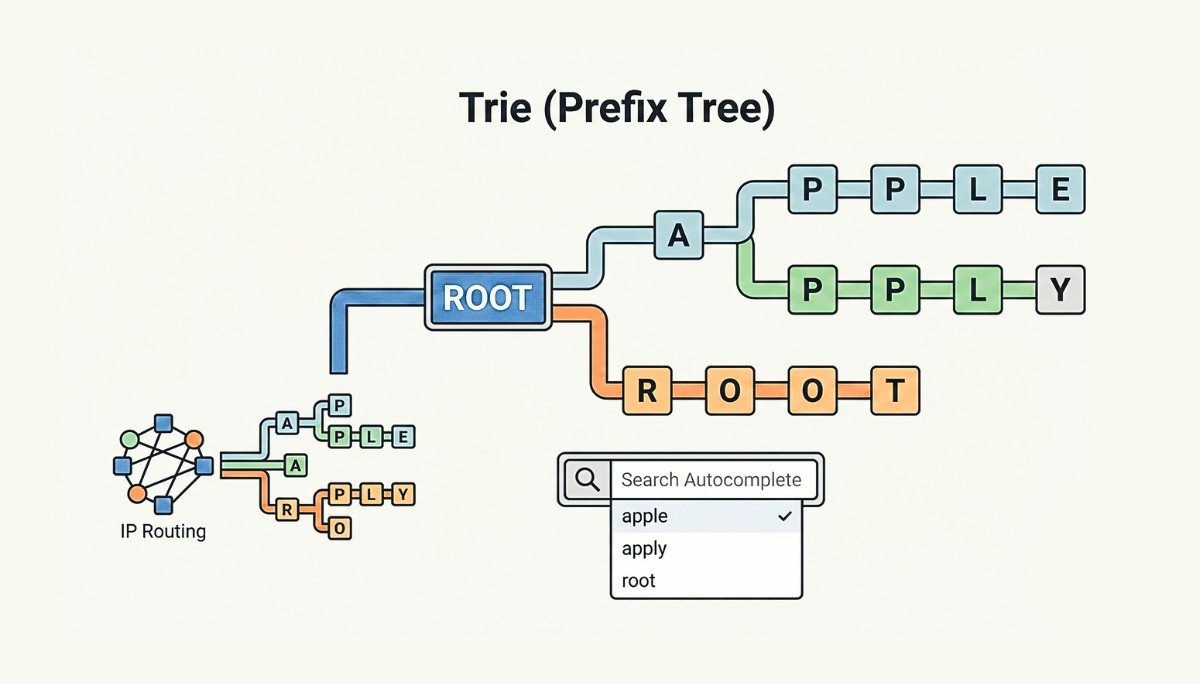What Is an ML Model? How AI Can Help You Build One
By
Ethan Fahey
•
Aug 4, 2025
Yes, AI can now build machine learning models thanks to tools like AutoML. These systems take on the heavy lifting of tasks such as data preprocessing, algorithm selection, and model tuning, making it easier and faster to develop high-quality ML solutions. In this article, we’ll break down how AutoML works, explore its advantages, and highlight top platforms like Google Cloud AutoML, H2O.ai, and Microsoft Azure Machine Learning. For recruiters and AI professionals navigating this fast-moving space, Fonzi AI helps you identify candidates and teams already experienced with these cutting-edge tools—so you’re not just keeping up, you’re staying ahead.
Key Takeaways
AI-driven Machine Learning models automate creation processes, enhancing efficiency and effectiveness across diverse sectors, including healthcare and finance.
Automated Machine Learning (AutoML) simplifies model building, allowing even users with limited expertise to develop reliable machine learning models quickly.
Despite its advantages, AI-driven model creation faces challenges, including data quality issues, ethical considerations regarding bias, and substantial resource requirements for scalability.
AI-Driven Machine Learning Models

The rise of AI has redefined the landscape of machine learning by enabling the autonomous creation of complex models. These AI-driven machine learning models leverage sophisticated algorithms to automate various aspects of the modeling process, significantly reducing manual effort and enhancing operational efficiency. The impact of these models can be seen across numerous sectors, from healthcare to finance, where they streamline processes and improve customer experiences.
One notable example is the use of AI-generated models in e-commerce, where they enhance customer service through chatbots and recommendation systems. These advancements not only save time but also provide more accurate predictions and personalized experiences for users. AI’s automation of model creation and refinement allows businesses to swiftly respond to evolving data and market conditions.
Exploring AI-driven machine learning models involves understanding Automated Machine Learning (AutoML), the role of neural networks, and the benefits of AI in model creation. These elements collectively contribute to the remarkable capabilities of modern machine learning systems.
Automated Machine Learning (AutoML)
Automated Machine Learning, or AutoML, is a groundbreaking approach that significantly reduces the complexity involved in selecting and tuning machine learning algorithms. For instance, hyperparameter optimization is a crucial feature of AutoML, allowing models to achieve better performance through automatic adjustments. Consider the H2O Driverless AI platform, designed to automate machine learning workflows and make it easier to develop and deploy models quickly.
AutoML platforms empower users, even those with limited machine learning expertise, to build effective models. AutoML streamlines tedious and intricate processes, allowing data scientists and businesses to concentrate on high-level strategies and decision-making. The result is a more efficient and streamlined model-building process that delivers accurate and reliable results.
Role of Neural Networks in AutoML
Neural networks play a pivotal role in enhancing the capabilities of AutoML by learning complex patterns from data. These artificial neural networks, particularly convolutional neural networks and deep learning models, excel in processing high-dimensional data, making them suitable for a variety of tasks. The artificial neural network approach allows for even greater flexibility in model design.
From image recognition to natural language processing, neural networks enable AutoML to tackle diverse challenges with high accuracy and efficiency.
Benefits of Using AI for Model Creation
The advantages of using AI for model creation are manifold:
AutoML tools enhance efficiency by automating complex and repetitive tasks, thereby streamlining the machine learning workflow.
Leading AutoML tools enable users to develop machine learning models with reduced programming demands.
This makes the process accessible to a broader audience.
By significantly improving overall performance, AI-driven model creation allows organizations to save time and resources. The automation of model building not only accelerates the development process but also ensures that models can be updated and refined continuously, adapting to new data and evolving requirements.
This efficiency is crucial in today’s fast-paced technological landscape, where timely and accurate predictions can provide a competitive edge.
Key Components of AI-Generated ML Models

The creation of AI-generated machine learning models involves several key components, each contributing to the model’s overall effectiveness:
Data preparation and preprocessing: fundamental steps that ensure the quality and accuracy of the training data.
Algorithm selection and optimization: crucial for tailoring models to specific tasks.
Model evaluation and validation: ensure reliability and performance.
Moreover, AI-driven models have the unique ability to continuously learn and adapt, improving their accuracy and effectiveness over time without extensive human input. This dynamic learning capability is a significant advantage, allowing models to stay relevant and accurate as machines learn and new data becomes available.
Let’s delve deeper into each of these components to understand their roles in the model parameter creation process.
Data Preparation and Preprocessing
Data preparation and preprocessing are critical steps in the machine learning workflow. Data cleaning, which involves removing inaccuracies and ensuring the quality of the training dataset, is essential for building reliable models. Data acquisition and cleaning are often time-consuming but vital processes that directly impact the model’s performance.
High-quality training data leads to improved performance and accuracy of AI models. Tasks like exploratory data analysis and classifying data help data scientists perform tasks to ensure input variables are relevant and clean, boosting the training process, model training effectiveness, and predictive outcomes in data science.
Algorithm Selection and Optimization
Selecting the appropriate machine learning algorithms is crucial for achieving optimal performance in specific tasks. Common machine learning algorithms include:
Linear regression
Decision trees
Random forest
XGBoost
Each of these algorithms serves a unique purpose. The introduction of hybrid reasoning regression models allows users to toggle between efficiency and in-depth reasoning, optimizing performance based on task requirements through a linear combination of approaches. Additionally, decision tree learning can enhance the interpretability of models, especially in classification and regression models.
A machine learning algorithm is a mathematical method that finds patterns in data, influencing how well a model performs. Careful selection and optimization of machine learning methods ensure models are accurate and efficient, capable of handling complex data sets and delivering reliable predictions to train algorithms within a computer program, including the use of a linear function.
Model Evaluation and Validation
Evaluating and validating machine learning models is crucial for determining their performance and ensuring reliability. Metrics such as accuracy, precision, and recall are often used to assess model performance, ensuring that the models provide accurate predictions and reduce the risk of overfitting.
Reliable performance metrics help assess how well the model will generalize to unseen data. This step is essential for building trust in the model’s predictions and ensuring that it can perform well in real-world data applications, where the data may differ from the training set.
Popular AutoML Tools and Platforms

Selecting the right AutoML tool or platform is crucial for leveraging the full potential of AI in machine learning. Popular AutoML tools offer a range of features that simplify the model-building process and enhance machine learning capabilities. Prioritizing essential machine learning capabilities allows organizations to select platforms that best align with their needs and workflows.
Let’s explore some of the most popular AutoML tools and platforms available today, such as Google Cloud AutoML, H2O.ai, and Microsoft Azure Machine Learning. Each of these platforms offers unique features and benefits, making them suitable for different types of machine learning tasks and industries.
Google Cloud AutoML
Google Cloud AutoML allows users to create custom machine learning models quickly, even with little ML expertise. Featuring a user-friendly graphical interface, it simplifies the development and deployment of models. The platform supports various data types, including structured data, images, and text, making it versatile for different applications.
With capabilities for object detection, image classification, and natural language processing, Google Cloud AutoML utilizes Vertex AI to streamline model building, deployment, and scaling. This comprehensive approach ensures that users can efficiently handle a wide range of machine learning tasks.
H2O.ai
H2O.ai provides a suite of open-source tools that facilitate machine learning model development and deployment for both individuals and enterprises. By offering enterprise solutions that focus on scalability and customization, H2O.ai enables users to build and deploy models that can handle large datasets and complex workflows.
Microsoft Azure Machine Learning
Microsoft Azure provides a robust AutoML platform that simplifies the process of building machine learning models. With seamless integration with various Azure services, such as Azure Data Factory and Azure Machine Learning Studio, the platform enhances data management and model deployment processes. The integration with Azure DevOps allows continuous integration and delivery (CI/CD) of machine learning models, streamlining development and deployment within the Azure ecosystem.
Azure’s AutoML has been applied in healthcare for predictive analytics, as well as in finance for risk assessments and fraud detection. This versatility makes it a valuable tool for organizations looking to leverage AI for various applications.
Real-World Applications of AI-Created ML Models

Machine learning models are essential for recognizing patterns in data or making predictions, with applications spanning industries like healthcare, finance, and retail. In these fields, AI-generated models significantly improve predictive analysis and decision-making processes. For example, deep learning models excel in tasks such as facial recognition and natural language processing, showcasing their versatility in real-world applications using more machine learning models and machine learning techniques.
As we explore specific applications, we’ll see how AI-powered models transform healthcare, enhance fraud detection in finance, and provide personalized shopping experiences in retail. These real-world examples highlight the practical benefits of AI in various sectors.
Healthcare and Medical Diagnosis
AI models in healthcare are used to analyze patient data and assist in diagnosing conditions earlier through advanced imaging techniques. AI’s capability to quickly perform image analysis on medical images improves diagnostic accuracy for conditions like cancer, ultimately enhancing patient outcomes.
Financial Services and Fraud Detection
In finance, machine learning algorithms help identify fraudulent transactions by analyzing behavioral patterns in transaction data. AI algorithms enhance customer security by flagging unusual transactions based on user behavior, preventing fraud, and ensuring the integrity of financial institutions through anomaly detection.
Retail and Customer Personalization
AI-generated models in retail enhance the ability to provide tailored shopping experiences. Retailers leverage machine learning to tailor product recommendations based on individual shopping behaviors and preferences, improving customer satisfaction and managing inventory levels effectively.
Challenges and Limitations of AI in Model Creation
Despite the numerous benefits, AI in model creation faces several challenges and limitations:
The ‘black box’ nature of AI models makes it difficult to trace how specific conclusions are reached.
Generative AI can be deceived by slight alterations in input data, leading to drastically different results.
The resource requirements for training and deploying AI models are substantial, potentially limiting accessibility for smaller organizations.
Ethical considerations and scalability issues further complicate the landscape. Ensuring data quality and addressing biases are crucial for building reliable and fair AI models. Let’s delve into these challenges in more detail.
Data Quality and Availability
Data quality and availability are crucial for the performance of machine learning models. Key points include:
Insufficient data resources can hinder effective model training, impacting overall performance.
When training data is biased or limited, it can skew the model’s predictions and outcomes.
Data-related issues can lead to misleading algorithms and incorrect conclusions, highlighting the importance of accurate data points and the relevance of a robust data set.
Therefore, ensuring high-quality, unbiased labeled data is essential for building effective and reliable machine learning models.
Ethical Considerations and Bias
Bias and discrimination in various applications raise significant ethical concerns for AI-generated models:
Bias in AI can perpetuate existing inequalities.
It influences decisions in critical sectors such as hiring and criminal justice.
Regular audits of AI systems are necessary to identify and mitigate bias, ensuring fair outcomes.
The lack of comprehensive laws governing AI practices poses ethical challenges for developers and users alike. Addressing these ethical considerations is crucial for the responsible development and deployment of AI models.
Scalability and Resource Requirements
As AI systems grow, they need to accommodate increased loads while maintaining performance levels. Effective management of workloads is essential to ensure that performance does not degrade under increased demand. Scaling AI systems often requires ongoing investment in resources and infrastructure, including computing power and storage.
Maintaining high performance in scalable AI systems is a continuous process that involves optimizing techniques and investing in the necessary resources. These efforts are crucial for sustaining the scalability of AI-driven model creation and ensuring that the models can handle large-scale applications effectively.
Future Trends in AI and Machine Learning Model Creation

Emerging trends in AI and machine learning are increasingly focused on improving automation and developing more efficient algorithms. These advancements aim to streamline the model creation process and reduce the need for extensive human oversight. By enhancing automation, AI can further simplify the development and deployment of machine learning models, making them more accessible and effective.
Future trends also include deeper integration of AI with other technologies, such as natural language processing and computer vision, to create more powerful and versatile applications. Additionally, efforts to democratize AI will ensure that these advanced tools are accessible to a broader range of users, including non-experts.
Let’s explore these future trends in more detail.
Advances in Deep Learning and Neural Networks
Future advancements in deep learning are expected to enhance the capabilities of AutoML, allowing for more automated and efficient model training. These improvements in deep learning techniques, semi-supervised learning, and machine learning technology will likely lead to more streamlined processes in model creation and potentially reduce the need for extensive human oversight.
By leveraging advancements in deep neural networks, AI systems can better mimic the way the human brain works, recognizing hidden patterns and making more accurate predictions. These developments will enable more sophisticated applications across various industries, from healthcare to autonomous vehicles.
Integration with Other AI Technologies
The future will see deeper integration of machine learning with technologies like natural language processing and computer vision, leading to more powerful AI applications. As AI technologies evolve, the collaboration between machine learning and domains like natural language processing will enhance contextual understanding in applications.
The integration of AI with natural language processing and computer vision is expected to enhance model creation and broaden the applications of AI technologies. Attention mechanisms, initially developed for natural language processing, are expected to expand into areas like computer vision, speech recognition, and audio processing, further enhancing the capabilities of AI systems.
Democratizing AI and Machine Learning
Efforts to simplify AI and machine learning tools aim to empower non-experts to leverage these technologies without extensive technical expertise. Making tools and platforms more accessible broadens AI’s user base across various sectors, driving its democratization.
Leading AutoML tools include platforms that simplify the machine learning process, making it accessible to non-experts. The reduction in computational costs and the introduction of user-friendly tools are key factors in making AI technologies accessible to a wider audience.
These efforts will ensure that the benefits of AI and machine learning are available to more people, driving innovation and progress across industries.
Summary
In summary, AI-driven machine learning models have revolutionized how we analyze data and make predictions. By automating complex tasks and enhancing efficiency, AI has made machine learning more accessible and effective. Key components such as data preparation, algorithm selection, and model evaluation are crucial for creating reliable models. Popular AutoML tools like Google Cloud AutoML, H2O.ai, and Microsoft Azure Machine Learning offer powerful features that simplify the model-building process.
AI-generated models are already making a real impact in industries like healthcare, finance, and retail—delivering smarter solutions and greater efficiency. But alongside these benefits come important challenges: data quality, ethics, and scalability are all critical factors that need thoughtful attention. As we look to the future, breakthroughs in deep learning, better integration across AI technologies, and efforts to make AI more accessible will shape the next wave of innovation. For business-focused recruiters and AI professionals, platforms like Fonzi AI help you find and build teams with the right skills to stay ahead of these shifts and deploy AI responsibly and effectively.




